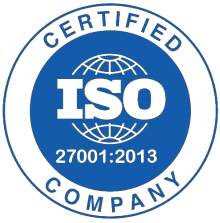Learn how to automate WooCommerce order details into MongoDB with Pabbly Connect. Follow this step-by-step tutorial to set up the integration effortlessly. Explore efficient methods for automating routine tasks with clear, concise instructions suited for both newcomers and experienced professionals.
Watch Step By Step Video Tutorial Below
1. Setting Up Pabbly Connect for WooCommerce and MongoDB Integration
To start integrating WooCommerce order details into MongoDB, first, you need to set up Pabbly Connect. This automation platform allows you to connect various applications seamlessly.
Begin by signing up for a free account on Pabbly Connect. After logging in, you will arrive at the dashboard where you can create your automation workflow. Click on the ‘Create Workflow’ button, give it a name like ‘WooCommerce to MongoDB’, and select a folder for your workflow.
2. Trigger Setup in WooCommerce Using Pabbly Connect
In this step, you will configure the trigger to receive new orders from WooCommerce. Start by selecting WooCommerce as the application in the trigger window of Pabbly Connect.
- Choose ‘New Order Created’ as the trigger event.
- Copy the webhook URL provided by Pabbly Connect.
- Paste this URL into your WooCommerce settings under ‘Advanced’ > ‘Webhooks’.
After adding the webhook URL, ensure to activate it. This setup allows Pabbly Connect to listen for new orders placed on your WooCommerce store.
3. Testing the WooCommerce Trigger in Pabbly Connect
Once the webhook is set, it’s essential to test the trigger. Place a new order on your WooCommerce store to confirm that the data is received by Pabbly Connect.
As you complete the checkout process, ensure you fill in customer details and product selections. After placing the order, return to Pabbly Connect and click on ‘Recapture Webhook Response’ to see if the order details are received correctly.
- Check the response for customer name, address, and product details.
- Verify that the information matches the order placed in WooCommerce.
If the data appears correctly, you can proceed to the next step of the integration.
4. Setting Up MongoDB Action in Pabbly Connect
Now that the trigger is confirmed, it’s time to set up the action in MongoDB. In the action step of Pabbly Connect, select MongoDB as the application.
Next, choose the action event as ‘Create Record’. You will need to connect your MongoDB account by entering the connection string, which includes your username, password, and database name. Ensure you specify the collection where you want to store the order details.
Enter the database name (e.g., WooCommerce) and the collection name (e.g., New Orders). Map the necessary fields from the WooCommerce order data to MongoDB fields. Use the custom data option to specify what information to send.
After mapping all required fields, click on ‘Save and Send Test Request’ to ensure the data is sent to MongoDB successfully.
5. Verifying Data in MongoDB After Integration
After setting up the action, it’s crucial to verify that the order details are correctly stored in MongoDB. Refresh your MongoDB database to check for the new record created by Pabbly Connect.
You should see the new order details, including customer name, email, address, and product information neatly organized in the specified collection. This confirms that the integration is functioning as intended.
For future orders, simply repeat the process of placing an order in WooCommerce, and the new data will automatically populate in MongoDB without any additional setup needed.
Conclusion
Integrating WooCommerce order details into MongoDB using Pabbly Connect streamlines your data management process. With this setup, all order information is automatically captured and stored, enhancing your operational efficiency.
Ensure you check out Pabbly Connect to create business automation workflows and reduce manual tasks. Pabbly Connect currently offer integration with 2,000+ applications.
- Check out Pabbly Connect – Automate your business workflows effortlessly!
- Sign Up Free – Start your journey with ease!
- 10,000+ Video Tutorials – Learn step by step!
- Join Pabbly Facebook Group – Connect with 21,000+ like minded people!






